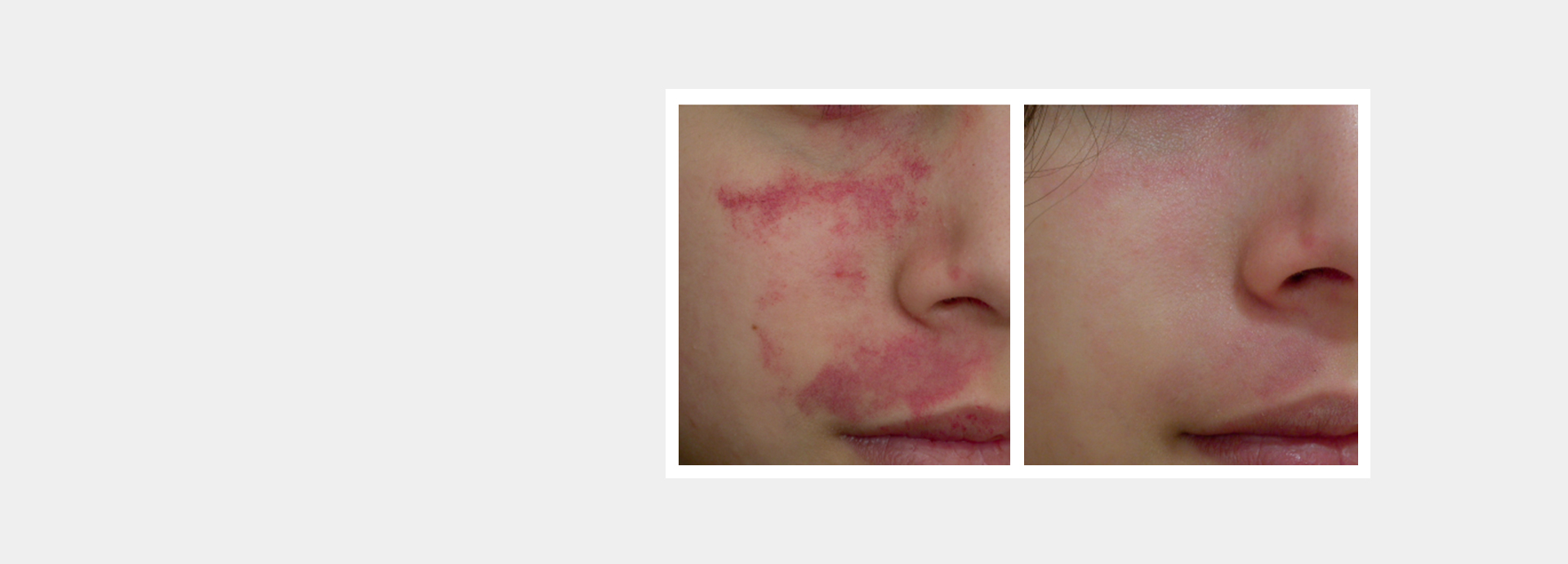IPL Candela Nordlys Treatment for Port-Wine Stains
Advanced Laser Therapy for Vascular Birthmarks
Port-wine stains (PWS) are vascular birthmarks that can be present at birth and grow darker or more pronounced over time. At our clinic, we use the Candela Nordlys system, a state-of-the-art Intense Pulsed Light (IPL) and Nd:YAG laser treatment to safely and effectively reduce the appearance of port-wine stains, helping to lighten and smooth the skin with minimal discomfort and downtime.
Why Choose IPL Candela Nordlys for Port-Wine Stains?
✔ Clinically Proven & FDA-Approved – Nordlys is medically tested to treat vascular conditions safely and effectively.
✔ Selective Waveband Technology (SWT®) – Provides precise targeting of abnormal blood vessels without damaging surrounding skin.
✔ Customizable Treatment – IPL is used for lighter, superficial port-wine stains, while Nd:YAG laser is effective for deeper, more stubborn vascular lesions.
✔ Minimally Invasive with No Surgery – No incisions, no needles, and minimal downtime.
✔ Long-Term Improvement – Helps lighten and fade port-wine stains over a series of treatments.
What Are Port-Wine Stains & Why Do They Occur?
Port-wine stains are capillary malformations caused by abnormal blood vessel development. They appear as flat, pink, red, or purple patches on the skin, often on the face, neck, arms, or legs.
What Happens Over Time?
- Port-wine stains may darken with age.
- The affected area can develop a thicker, rougher texture over time.
- Without treatment, enlarged blood vessels can cause skin complications.
Treating port-wine stains early with IPL or laser therapy can prevent them from becoming darker and thicker, preserving the natural texture of the skin.
How Does IPL & Nd:YAG Laser Treat Port-Wine Stains?
The Candela Nordlys system uses advanced light-based technology to target abnormal blood vessels in port-wine stains:
🔹 IPL (Intense Pulsed Light) – For Superficial Port-Wine Stains
✔ Emits controlled pulses of broad-spectrum light, which absorb into the dilated capillaries, causing them to shrink and fade.
✔ Best for lighter, pinkish-red port-wine stains that are closer to the skin’s surface.
🔹 Nd:YAG Laser – For Deeper, More Resistant Port-Wine Stains
✔ Uses a longer wavelength to penetrate deeper blood vessels, sealing them off over time.
✔ Ideal for darker, thicker, or more persistent port-wine stains.
Over a series of treatments, the body naturally absorbs the treated vessels, leading to gradual fading of the port-wine stain.
What to Expect During & After Treatment
How Does IPL & Nd:YAG Laser Feel?
✔ Most clients describe the sensation as a warm snapping feeling, similar to a rubber band flick.
✔ The Candela Nordlys cooling system minimizes discomfort and protects the skin.
✔ No anesthesia is needed, and treatments are well-tolerated.
What Happens After Treatment?
✔ Temporary redness and mild swelling may occur for a few hours to a day.
✔ The treated area may darken temporarily before gradually fading.
✔ Some patients experience mild bruising, which resolves in about a week.
✔ No downtime – most clients return to normal activities immediately.
Treatment Program & Frequency
📅 Recommended Course:
- 4–8 sessions, depending on the size and depth of the port-wine stain.
- Sessions are spaced 6–8 weeks apart to allow the skin to heal and absorb the treated vessels.
📅 Maintenance Treatments:
- Some port-wine stains may require ongoing maintenance every 1-2 years to prevent recurrence.
💡 Early treatment is recommended for best results, especially in younger individuals, as newer port-wine stains respond better to IPL therapy.
When Will I See Results?
📅 After 1–2 sessions: Initial lightening of the stain may be noticeable.
📅 After 4–6 sessions: A significant reduction in redness and thickness occurs.
📅 After a full course: The port-wine stain appears faded, smoother, and less pronounced.
📅 Long-term: Some patients may require touch-up treatments for sustained improvement.
Price List
Consultation required no patch test
£30.00 (refundable against a treatment)
Per session (hand palm size)
£200.00
Per course of 3
£550.00





